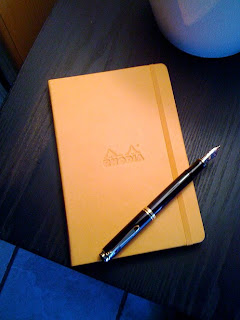
“Delia! Put that down. It don’t belong to you.”
“Why?”
“It’s not yours, Delia. Go on back yonder by the window…I’m gonna call Baby Clyde. Now go on.”
Mumbling to herself, half English, half Spanish, Delia rolled her chair over to her side of the room, leaving behind the pink sweater that was halfway out of the drawer when Jewel called out.
Delia had been at the Rose of Sharon retirement home for almost a year, but by now unable to recall how long it had been. Time, despite the tick of clocks and calendar squares was a forgotten concept, just another undefined confusion among the names and unnamed objects that swirled in the fog of her days and brought nighttime dreams she swore were real. Delia was eighty-seven years old and the mother of four sons, none of them nearby. It was the eldest who arranged and paid for his mother’s care at Rose of Sharon. Too far away to visit more than two or three times a year, he left that part of it to the youngest, who lived at least within an hour’s drive of the nursing home. Of the other two sons, one lived in Miami and had a new address and telephone number every month. The other son had never left Cuba.
Delia was unwilling to leave the little house in Edgewater after her husband’s death, wouldn’t agree to move away, to leave behind the reminders of Jorge, the rooms still colored by the lingering shades and smells of her husband. She had shaken her head, lips compressed into a straight line, refusing to go and live with Enrique in New York.
But living alone became increasingly difficult and little by little Delia lost her way, lost the will or desire to take care of herself. It was finally the neighbor who called Enrique in New York.
She wasn’t sure when that happened, but one day Enrique arrived, and now she couldn’t find the house in Edgewater, though she looked for it every day. Her son Amado came from Orlando to visit and took her in his car to see the house, but people she didn’t know could be seen through the windows and this upset her. She sat in the car twisting a tissue into shreds, cried and wouldn’t let go of Amado when he held her.
So now, Delia roamed the hallways of the Rose of Sharon nursing home in her wheelchair, her still thick mane of white hair falling in tangles around her face and shoulders. On more than one occasion she entered someone’s room and startled them, ask that they comb her hair or rub her feet. It was usually Baby Clyde, the nurse’s aide who came and collected her. A mention of his name was usually enough to stop Delia, he being the only one in the nursing home who had found some small clear window into her confusion. She responded to none of the other aides.
Last week she returned to the room with a bottle of medicine she had found on a table in another room. Delia was unscrewing the top when Jewel called out.
“Don’t you drink that Delia! That’s somebody’s medicine, not for you.”
“I know it’s my husband’s medicine and he had to take it every day.”
Jewel got herself over to Delia and put a hand over the bottle. “Delia, come on now and give me that medicine so Baby Clyde can take it back. It’s got somebody’s name on it there.”
“It’s probably my husband’s name.”
“Stop now. You want some Graham Crackers and peanut butter?” Jewel knew that her roommate liked the crackers, because just last week she’d stolen a plate full of them off Jewel’s table.
“Well, I might try one. They sound good. Would you rub my feet?”
Jewel slipped the bottle of medicine out of Delia’s hand and said, “I’ll ask the nurse about that when she comes.”
“Why?”
“She’ll be coming to get this medicine after I push the button. Now you sit here while I go over there and get you one or two of my crackers and peanut butter.” She brought the crackers over to Delia on a paper towel. Putting it down in her lap, she said. “You ain’t seen my Bible, have you? I know I had it in that drawer by my bed last night.”
Delia looked at Jewel with eyes that made no connection to Bible or peanut butter crackers. She was quiet again, lost somewhere among the shifting bits of memory that held the house in Edgewater and her husband Jorge, the man who rubbed her feet and combed her hair for all those years. She was sure it was all still there in her house if she could just find it.

























